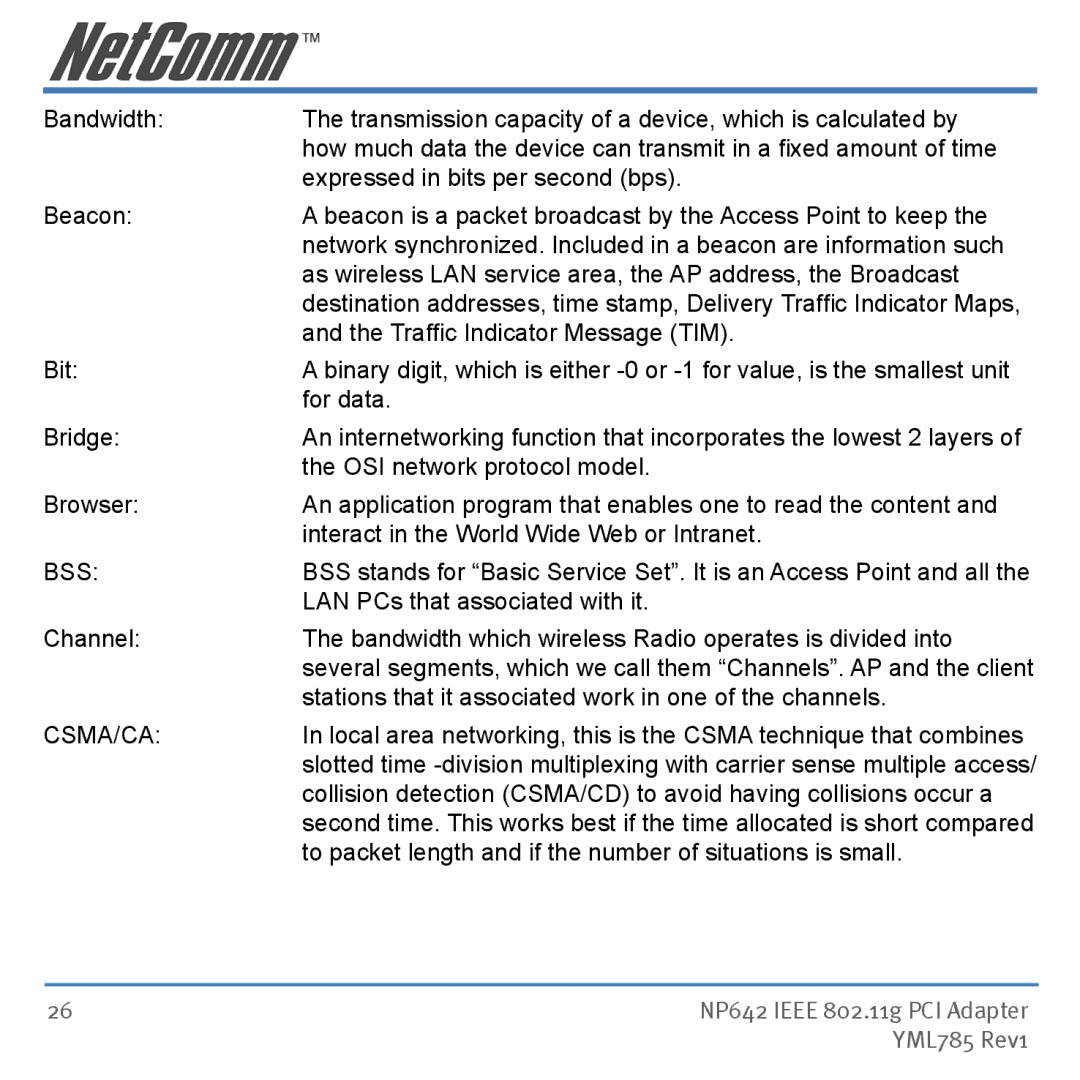
Bandwidth: | The transmission capacity of a device, which is calculated by |
| how much data the device can transmit in a fixed amount of time |
| expressed in bits per second (bps). |
Beacon: | A beacon is a packet broadcast by the Access Point to keep the |
| network synchronized. Included in a beacon are information such |
| as wireless LAN service area, the AP address, the Broadcast |
| destination addresses, time stamp, Delivery Traffic Indicator Maps, |
| and the Traffic Indicator Message (TIM). |
Bit: | A binary digit, which is either |
| for data. |
Bridge: | An internetworking function that incorporates the lowest 2 layers of |
| the OSI network protocol model. |
Browser: | An application program that enables one to read the content and |
| interact in the World Wide Web or Intranet. |
BSS: | BSS stands for “Basic Service Set”. It is an Access Point and all the |
| LAN PCs that associated with it. |
Channel: | The bandwidth which wireless Radio operates is divided into |
| several segments, which we call them “Channels”. AP and the client |
| stations that it associated work in one of the channels. |
CSMA/CA: | In local area networking, this is the CSMA technique that combines |
| slotted time |
| collision detection (CSMA/CD) to avoid having collisions occur a |
| second time. This works best if the time allocated is short compared |
| to packet length and if the number of situations is small. |
26 | NP642 IEEE 802.11g PCI Adapter |
| YML785 Rev1 |
